THE WAKING LION

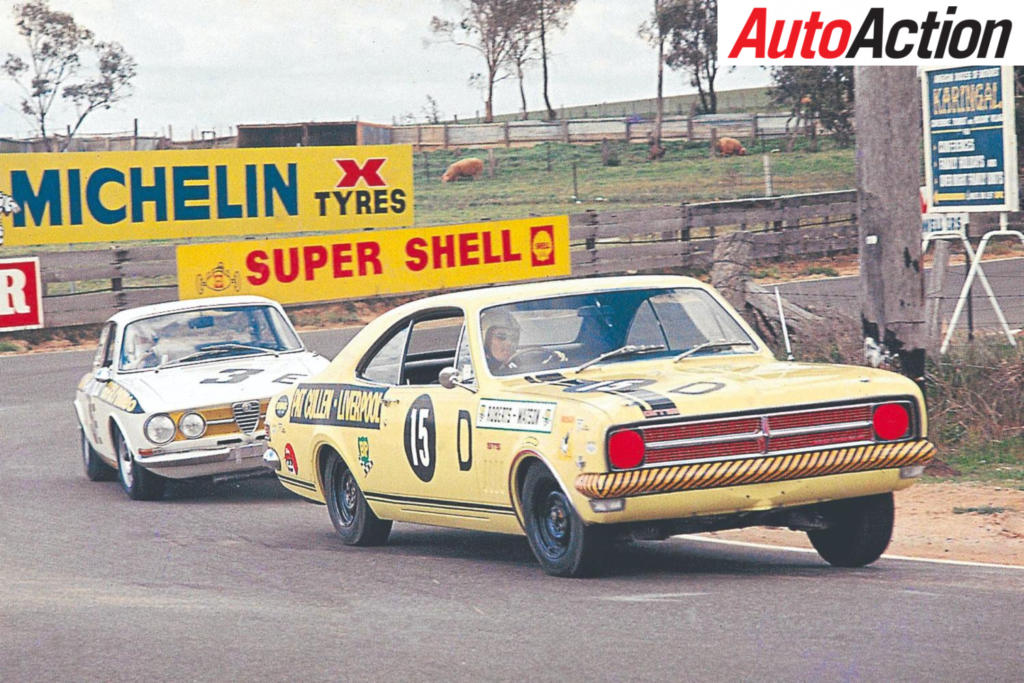
Winners of the 1968 Sandown three hour endurance race – today the traditional Bathurst warm up – Tony Roberts and Bob Watson drove their privateer HK GTS 327 to a podium at Bathurst.
The 1968 Hardie Ferodo 500 was the first time factory-supported teams of Ford and Holden V8s raced head to head, beginning a battle that continues to this day. However, it was not a factory car that won that first year but a privateer entry. The Holden HK Monaro GTS 327 driven by Bruce McPhee and Barry Mulholland (who famously drove only one lap) was victorious. Long-time Holden engineer, racer and rally champion Bob Watson tells us what it took to turn the newly-released Monaro into a race winner.
Words: BOB WATSON Photos: AUTOPICS.COM.AU, BOB WATSON & AUTO ACTION ARCHIVES
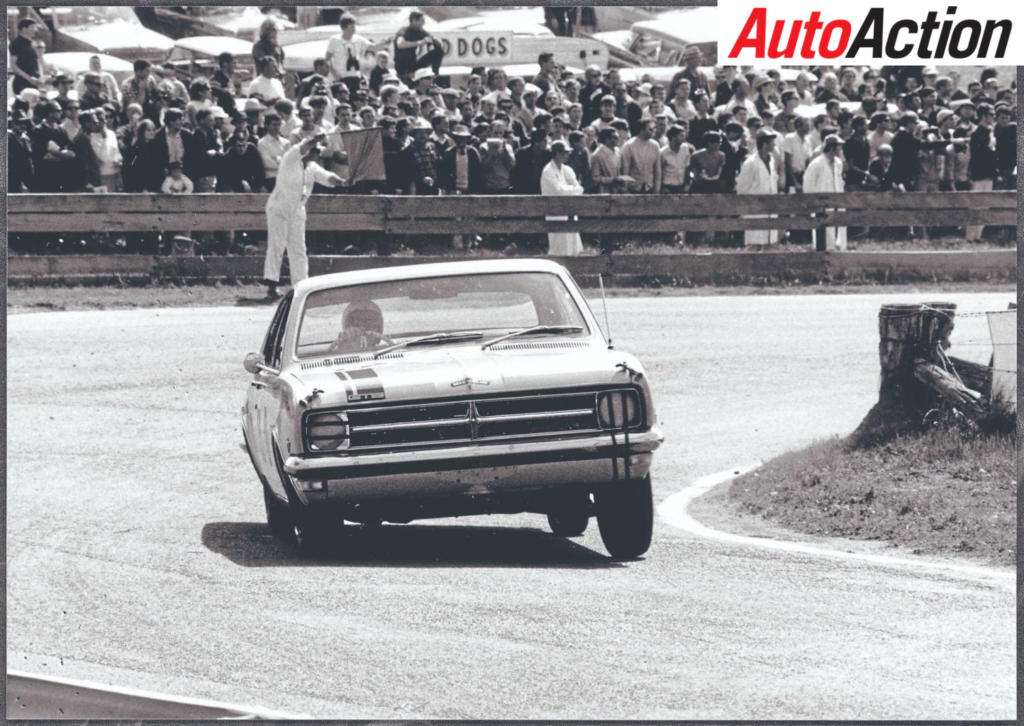
Bruce McPhee upset the big teams with a tactical tyre strategy running buffed hard- wearing Michelin XAS street tyres. The other Monaro teams ran full tread Michelin XASs.
After dozing quietly while other manufacturers were taking advantage of the publicity opportunities that televised motor sport could offer, Holden finally got the message in 1967.
The Falcon GT’s win at Bathurst and the subsequent surge in Ford sales made The General realise that something had to be done.
Holdens had been involved in sprint type touring class racing since the advent of the 48/215 model, with heroes like Bob Holden, Norm Beechey, Bob Jane and Pete Geoghegan thrilling the crowds. But these were private efforts, supported to some extent by the factory through the back door.
When showroom class long distance racing was born with the running of the Armstrong 500 at Phillip Island and the subsequent transfer to Bathurst, Holden was only mildly interested. Various privateers tried their luck, but it was not until the EH model was released in 1963 that the company had a car with potential for track success. The new ‘red’ motor was available in 149 cubic inch and 179 cubic inch versions, and power wise the 179 was a vast improvement on any previous Holden engine.
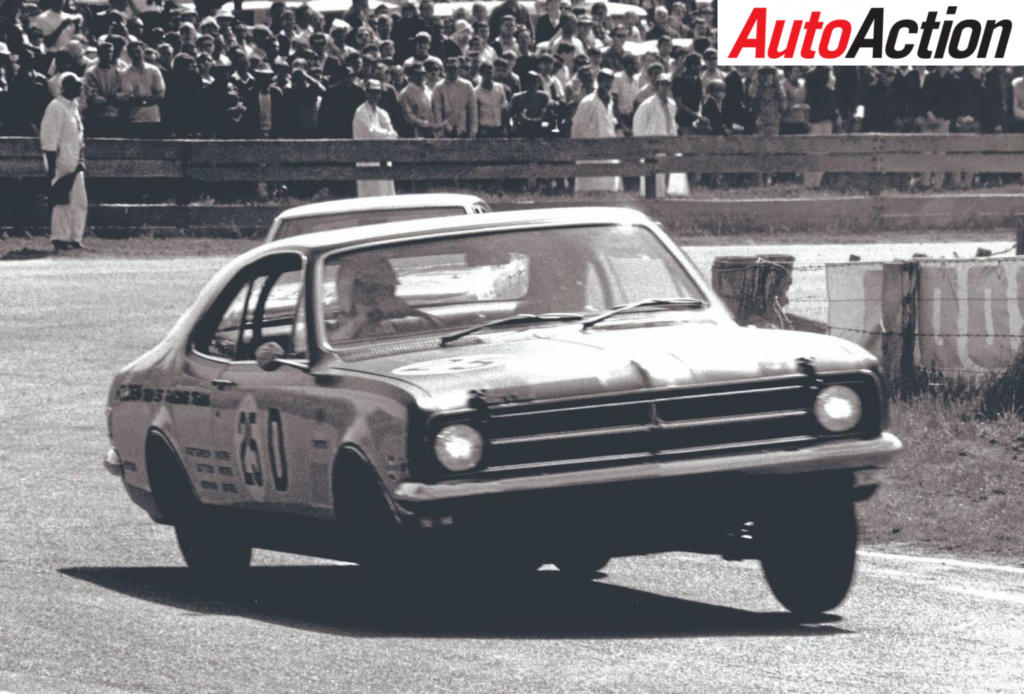
The man tasked with establishing the Holden Dealer Racing Team, David McKay, signed up top drivers including Brian Muir and Paul Hawkins, both successful internationally.
1963 – Holden’s first attempt
In September 1963 the company ran a limited series of cars down the production line known as the “S4”. Six S4s were entered in the 1963 Bathurst 500 mile race, and drivers included Brian Muir and Spencer Martin. The Frank Morgan/Ralph Sach car finished second outright, sandwiched between the Cortina GTs of Harry Firth/Bob Jane and Bruce McPhee/Graham Ryan. GMH made little fuss about the success.
The Holden S4 was probably disadvantaged at Bathurst because of its three-speed gearbox. It would have been struggling between gears climbing the mountain, and possibly top speed was compromised by the use of the 3.55 differential ratio. The following year an EH Holden came 7th in its class, dominated by the race-winning Cortina GTs. The HD X2 made its Bathurst 500 debut in 1965, but finished well back in the field. There seemed to be no interest from Fishermens Bend in pursuing a racing program.
While Holden was fiddling, Ford was burning, with outright victories at Bathurst with the Cortina GT in 1964, the Cortina GT500 in 1965 and the Falcon GT in 1967.
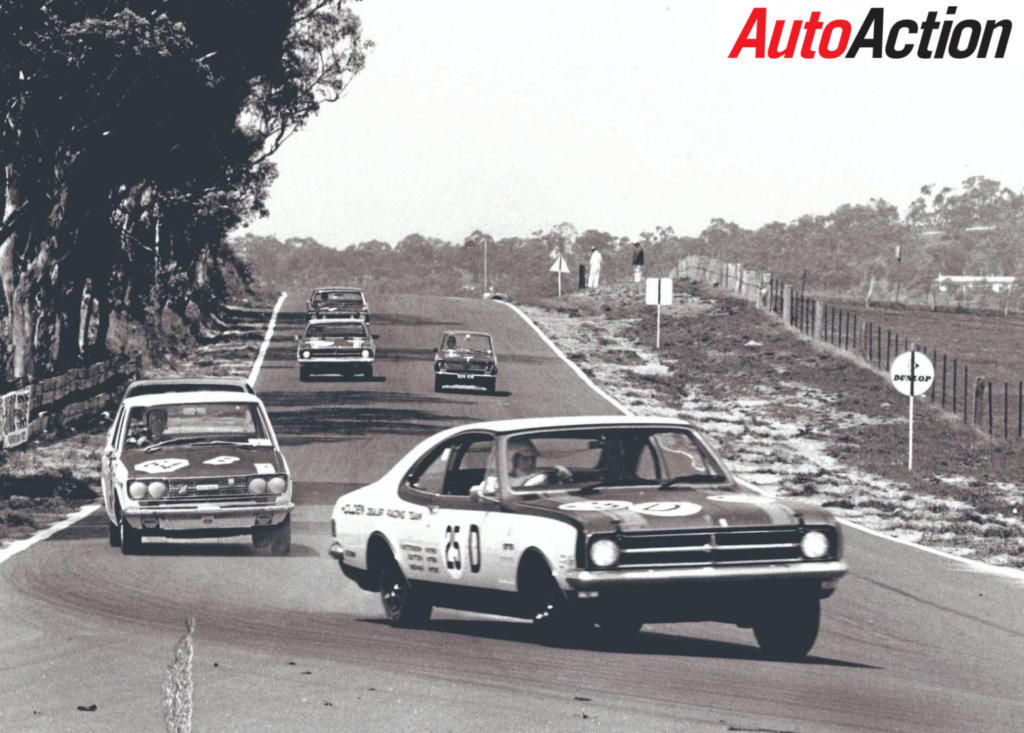
Variety was what these early Bathurst 500s were all about. Here the Monaros mix it with the Datsuns.
Time to get serious, developing a winner
By 1968 the time was right for Holden.
The Monaro had been released earlier that year, and was a big sales success. Sales Manager John Bagshaw, an outgoing character with a lot more get up and go than his predecessors, disliked the fact that Ford was stealing a march by its motor sport successes, and did something about it. He took his assistantPeter Lewis-Williams to America on a shopping expedition to select a power train that would give the Monaro a strong chance of winning at Bathurst.
The pair made a good selection – the Chevrolet 327ci engine coupled to a strong four-speed Muncie gearbox, a good basis to work on. Now the Monaro had to be developed into a race winning car- a big engine alone does not win Bathurst for you, as Studebaker and others had learned.
A quiet development program was initiated at Holden’s Lang Lang proving ground.
An example of the Ford Falcon 289 GT, the 1967 Bathurst winner, was purchased, and the proving ground ride and handling track became a motor race circuit for the next six months. Chassis development engineers John Finlayson and I assumed the role of racing drivers, and other proving ground personnel were utilised as pit signallers and component changers.
Lower height higher rate springs, re-valved shock absorbers (in those days GMH made its own shock absorbers at the Dandenong plant), heavier front sway bar, reduced diameter rear brake wheel cylinders to prevent rear wheel lock up and tramp rods at the rear to control wheel hop under braking, were all tried and refined. Stronger wheels were designed. It was a tight program, because the time available to release the new parts and get the cars into production was very short. The only weak point in the package was the brakes, which were not up to the job, but time was too short to get upgraded parts into production. A small improvement was gained by removing the front brake dust shields.
Finally John Finlayson and I were satisfied that we had a Falcon beater. The beefy 327ci (5358cc) Chevrolet engine certainly had a power advantage over the 289ci (4735cc) Ford, and the Monaro suspension was tighter than the Ford’s, with less body roll and less understeer. The Monaro was an easier car to drive.
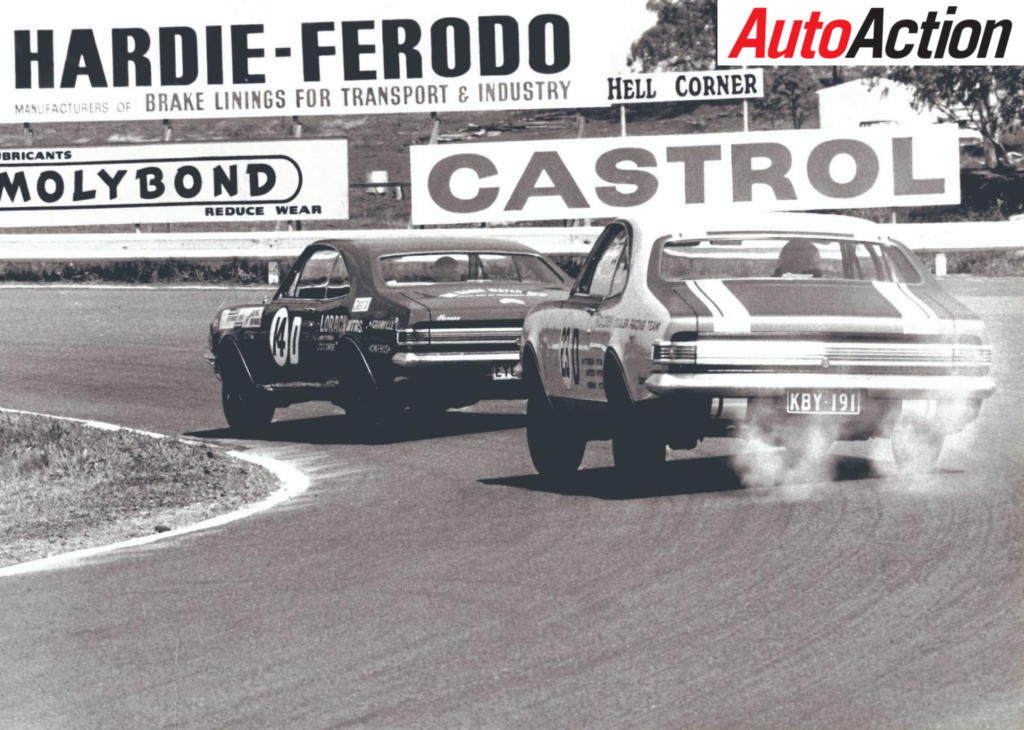
The factory GTS of Muir and Reynolds hunts the very fast privateeer car of Des West and Ron Marks, which was faster than the factory cars on the straights.
The road to Bathurst
The Monaro GTS 327 went into production and soon after Tony Roberts and I won the 1968 Sandown three hour production car race in a Monaro privately owned by Roberts. This win was greatly helped by the fact that we had hired the Sandown circuit a couple of weeks before the race for a long-distance record attempt under CAMS supervision, and drove the Monaro around the track for 24 hours, setting 16 new National distance records in the process.
For Holden the issue was now to find a team and drivers capable of realising the Monaro’s potential at Bathurst. Journalist David McKay was given the job of running a team of three Monaros ostensibly sponsored by the Sydney Daily Telegraph newspaper and run under the Holden Dealer Racing Team name. McKay had some pull, and signed up top drivers including Brian Muir and Paul Hawkins, both successful internationally, and a New Zealand pairing, Jim Palmer and Phil West.
For the first time factory supported teams of Ford and Holden V8s raced against each other, setting a pattern that continues to this day in Australian touring car racing. However, it was not one of the factory cars that won, but a privateer. The Wyong Motors entered Holden Monaro driven throughout the race by Bruce McPhee (apart from one lap mid-race driven by Barry Mulholland) upset the big teams with a tactical tyre strategy of running a buffed hard-wearing Michelin XAS street tyre. The other Monaro teams ran full tread Michelin XASs.
It is worth noting that when a list of the fastest cars down Con Rod straight was released, McPhee’s car was some 2.17mph faster than the rest of the Monaros – 128.57mph compared to the second fastest, 126.40 equally shared by the Dealer Team Holdens of Palmer/West and Muir/Reynolds. This indicated a significant horsepower advantage, but no action was taken by the scrutineers to check car No 13’s engine.
Initially Des West and Ron Marks were classified second but were later disqualified for illegal engine modifications. The West/ Marks Monaro was clearly faster than the other Monaros up the mountain and lead the race for a long time, which attracted the attention of the scrutineers after the race.
The engine was found to have oversize valves when checked against official specifications provided by me. As a Holden employee I had access to the official GM paperwork and took copies to Bathurst. I proved to be the only person with a copy of the engine specs!
Second place was then awarded to the Holden Dealer Racing Team Monaro of Jim Palmer (to that point the best finish by a New Zealander) and Phil West. The AM Roberts privately entered Monaro driven by Tony Roberts and myself finished third. Our race was incident free – always hard to achieve at Bathurst – and we could have done better. Because we knew the weakness of the brakes we treated them too gently, and at our brake pad pit stop the pads were only half worn, so we could have been using them a lot harder. But that’s motor racing!
It was a crushing victory for the new Monaro, and was followed in 1969 by another Monaro victory for the GTS 350 driven by Colin Bond/Tony Roberts. Monaros only competed in two Bathurst races, and won them both.
Article originally published in Issue 1746 of Auto Action.
For Auto Action’s most recent features, pick up the latest issue of the magazine, on sale now. Also make sure you follow us on social media Facebook, Twitter, Instagram or our weekly email newsletter for all the latest updates between issues.


